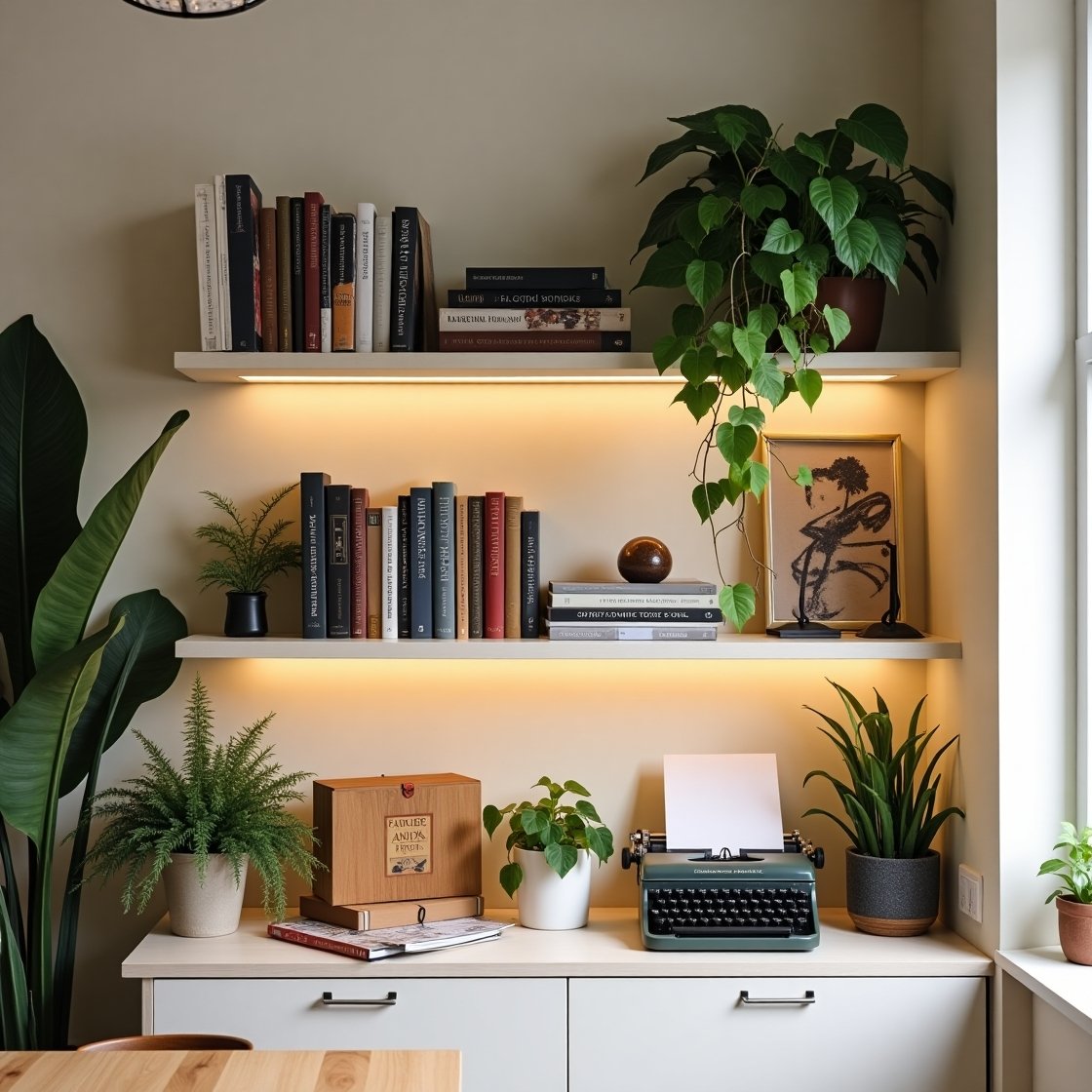A bookshelf can be so much more than just a place to store your favorite reads—it’s a canvas for personal expression and home styling. But the line between “chic and curated” and “messy and chaotic” is thin. The key is learning how to balance books, decor, and negative space to make your shelves look elevated and intentional.
In this article, you’ll discover how to style a bookshelf like a designer—beautifully arranged, yet functional and personal.
1. Start with a Blank Slate
The best way to refresh your bookshelf is to clear everything off first. This gives you a fresh perspective and lets you:
- Dust and clean the shelves
- Evaluate what to keep or remove
- Rethink layout and composition
Think of your bookshelf as a clean canvas. You’re about to build a visual story.
2. Sort Your Books by Size or Color
Books are the heart of any shelf—make them part of the design.
You can arrange them by:
- Size – tallest to shortest or grouped in blocks
- Color – a subtle gradient or full rainbow for drama
- Theme – novels on one shelf, art or design books on another
- Horizontal and vertical mixes – to break up visual monotony
Don’t be afraid to stack books horizontally for variation and to create pedestals for other objects.
3. Use the Rule of Thirds or Odd Numbers
When grouping objects, odd numbers (like 3 or 5) are more visually appealing than even ones.
Example trio:
- A stack of books
- A small vase or candle
- A decorative object or framed photo
Leave a bit of space around each grouping so nothing feels cramped.
4. Incorporate Decorative Objects
Layering in decor pieces is what elevates your shelves from practical to stylish.
Ideas to use:
- Vases or bowls
- Sculptural objects
- Candles or candleholders
- Small framed art
- Travel souvenirs
- Ceramics or pottery
- Natural elements like coral, wood, or crystals
Mix materials (metal, wood, glass, stone) for contrast and richness.
5. Add Greenery or Florals
A little life goes a long way. Even one or two plants can transform the entire look of your bookshelf.
Great options:
- A trailing plant like pothos or ivy
- A small cactus or succulent
- Dried eucalyptus or florals in a vase
- Faux plants if lighting is limited
Greenery adds softness, texture, and a fresh touch to any arrangement.
6. Layer Art and Frames
Bookshelves aren’t just for books—lean or hang small artwork to add depth and dimension.
Try:
- Leaning a framed print behind stacked books
- Layering two small frames in different styles
- Using art with similar tones to your color palette
Frames help break up the repetition of books and add personality.
7. Vary Height, Shape, and Texture
To avoid a flat, one-note shelf, make sure you change the rhythm across the shelf.
Tips:
- Mix tall and short items
- Pair round objects with rectangular ones
- Combine smooth ceramics with rough wood or stone
- Let a tall object sit next to a horizontal book stack
This movement makes the eye dance—and the shelves feel dynamic.
8. Leave Some Breathing Room
The most curated bookshelves have one thing in common: negative space.
Don’t feel the need to fill every inch. Leave:
- Empty spots on each shelf
- Room around groupings
- One or two shelves with very minimal styling
This makes your curated items stand out and prevents visual fatigue.
9. Style from Top to Bottom
As you build your shelf, consider how it looks as a whole—not just shelf by shelf.
Structure tips:
- Keep heavier and larger items on lower shelves
- Use lighter or airier pieces up top
- Repeat certain materials, shapes, or colors from top to bottom
- Step back often to check balance across the full unit
You want harmony across all levels, not just within a single row.
10. Make It Personal
A bookshelf should reflect who you are, not just look like a catalog.
Include:
- Framed photos of loved ones or travels
- Favorite objects from your hobbies
- Meaningful finds from flea markets or trips
- A few worn books that tell your story
Your bookshelf becomes more than decor—it becomes a statement.
Style, Structure, and Storytelling
When styled with intention, a bookshelf can be the focal point of any room. It tells a story through color, texture, shape, and the things you love most.
Remember:
- Start with a clean slate and organize your books thoughtfully
- Mix heights, materials, and groupings
- Add plants, artwork, and objects for layers
- Don’t forget the power of space and balance
- Make it personal—this is your story, after all
Let your bookshelf become a curated display of your life, your style, and your creativity.
